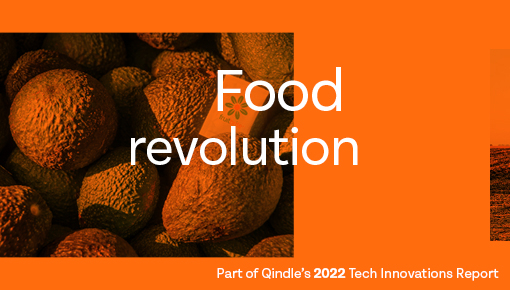Future Food-Tech 2022 – The Highlights
Health, sustainability, tech and the intersection of all three were at the heart of last week’s Future Food-Tech Summit in San Francisco.
Meaty, but without the meat
The event introduced 55 start-ups, many of them developing plant-based meat alternatives – a fast-growing market driven by both health and sustainability. This industry faces significant challenges. Consumers are looking for meat alternatives that don’t sacrifice taste, texture and experience. They know that today’s meat alternatives are highly processed, making them little healthier than the animal ones, at least when it comes to saturated fat and caloric value. Finally, production costs (and relatively low demand) are keeping prices high.
Gelatex is one company trying to solve the texture and meat experience. The company uses 3D nanofiber scaffolds as the support animal cells need when creating cultured meat in laboratories. Nanofiber scaffolds are built with high-quality raw materials that bring the right fibrosity and porosity to recreate meat texture.
Umiami is focused on health, and claims the answer lies in going back to basics. The company wants to become the first to offer plant-based whole cuts. They replicate the texture, consistency, nutritious value, and flavour of cooked chicken breast using only a couple of ingredients combined with secret technology, making the product a clean label and breaking away from the highly processed fast-food market.
Tech, a sustainability ally
We cannot talk about the future of food without mentioning sustainability. The event was a valuable platform to discuss how technology can help the food sector be more resilient and sustainable throughout the supply chain. Food waste is perhaps the first issue that comes to mind when thinking about sustainability challenges in the food sector. With one-third of food wasted every year and the need to feed 10 billion people by 2050, it is logically the most urgent problem to solve.
Even before food becomes food, there is waste. Leftovers from the agricultural sector are a known problem in the industry. Comet Bio, the winner of the Givaudan Innovation Challenge at Future Food-Tech San Francisco, processes harvest leftovers into high quality, healthy products. Their patented technology enables them to reclaim and purify lost nutrients while offering farmers the possibility to sell their entire harvest.
Tait Labs, is another example of a company upcycling value food waste to novel ingredients relying on science and advanced technology. Tait Labs not only produce their own upcycled food products but also support other companies in finding the most ethically produced ingredients and launching their sustainable product to the market.
On the other end of the supply chain, ClearCogs hopes to help packaging and redistribution by accurately forecasting the amount of food they should be dealing with. Using AI and data analysis, the company helps other companies and restaurants to better estimate the amount of food they require to satisfy their demand, resulting in little to no waste.
As the event demonstrated, there has never been a more exciting and challenging time for the food industry. What are your favourite innovation examples?
This article was first published on March 31, on Qindle’s Linkedin account.


